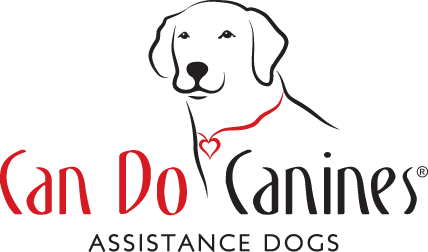Cue: Dog's name
The dog's name equals eye contact and sustained attention within 1-2 seconds of the cue. It's not a recall, but it's okay if the dog moves towards the handler.
Impact on the dog's future work:
When clients are out working with their service dogs, they often use their dog's names to redirect the dog's attention towards them, especially when the dog becomes distracted by external stimuli. This helps them refocus the dog quickly and ensures the dog remains attentive to cues and the client's needs.
Cue: Up
The dog jumps onto a surface (such as a grooming table or into a car) with all four feet.
Impact on the dog's future work:
Our clients need their service dogs to easily load into vehicles and confidently jump onto elevated surfaces such as a grooming table. Some clients can't lift their dogs into a vehicle or groom them on the floor, which is why they need to know the "up" cue.
Cue: Under
The dog sends beneath an object such as a table or chair and lies down. The handler does not need to lure or assist the dog in orienting under the object, and the dog is able to navigate short, tight spaces. The handler may be sitting or standing when cuing the dog. "Stay" is implied; requires release or next cue.
Impact on the dog's future work:
Our clients use the "under" cue to have their dogs lie beneath various objects such as desks, tables, chairs, etc. This cue is helpful because it provides the dog with a safe place to lie that is out of the way and helps prevent them from accidentally being stepped on in busy environments.
Cue: Yes
Reward marker. This word captures a behavior and indicates that the reward comes from the hand.
Impact on the dog's future work:
"Yes" is a marker word that tells the dog what they did was correct, and they will get a treat. Since the "yes" cue has a strong reinforcement history, it is very helpful to clients when they first start working with their dog as it allows for an easy transfer of the relationship to a new handler.




